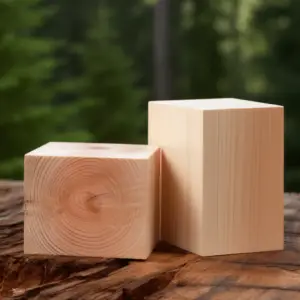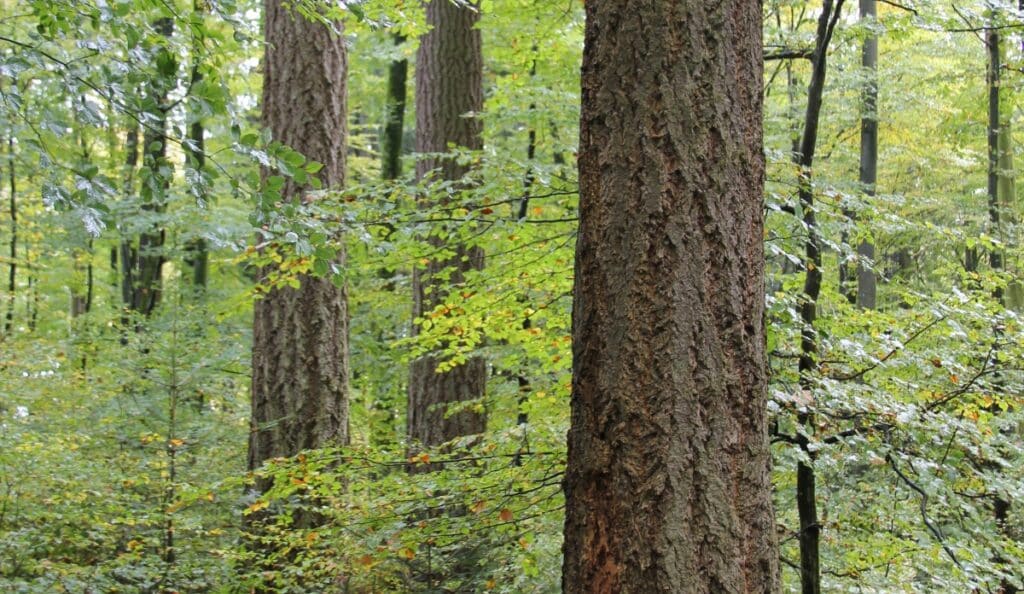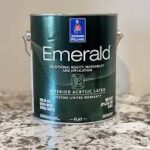Douglas fir and Cedar are both popular wood choices for woodworking that are abundant naturally. Both of these softwood trees are common in lumberjacking throughout the country and are at times used interchangeably.
Both Douglas fir and Cedar belong to the same plant family Pinaceae and will therefore possess many similarities. Moreover, with both, there are a number of varieties within each species that share the name.
Again, while many have similar qualities, there are differences that distinguish them and are relevant in the lumber sector.
Table of Contents
Douglas fir

Douglas fir, sometimes known as Douglas spruce, Columbian pine, or Oregon pine, is not a fir or pine. The names are drawn from common language overlaps and it does not belong to either categorization.
Many Douglas firs in the wild grow to 8 feet in diameter and over 100 meters tall. Several species have reached 500 years old, while others are still growing.
Douglas firs are incredibly robust and one of the reasons they grow so rigorously is the fact that they cannot withstand shade and softer temperatures in their younger years and for this reason they shed some of their foliage which allows them to shoot and tower over other greenery in search of sunlight and heat.
Cedar
Cedar, of the genus Cedrus, is a group of medium-sized trees that grow to a maximum height of about 60 meters and a diameter of between 1-3 meters.
They are native to the Himalayas and Mediterranean regions and although they appear to be abundant in nearly all continents, there is still debate over whether all the species previously considered cedars are actually all true cedars or merely share a multitude of characteristics.
The Americas have many species, yet none are native. Utah, West Virginia, Kansas, Indiana, Arizona, and Iowa cultivate cedar for wood. Western red cedar is the most commonly harvested timber cedar.
Douglas fir Vs Cedar: Overview
Hardness
Douglas fir and Cedarwood are soft. This differs from their softwood classification based on tree features. Neither is hard because they rank low on the Janka Hardness Scale.
Douglas fir is 660 hard and Western Red Cedar 330. Both are sturdy timbers, but they are not suitable for flooring, especially in high-traffic areas that require stronger support.
They are also unsuitable for furniture, which must hold a person’s weight or be used as storage for long periods. As a rule of thumb, wood suited for furniture and flooring should have a Janka rating of at least 1000.
Durability
Durability is in part informed by hardness and neither Douglas fir nor Cedar is considered hard. When treated or processed and well maintained with staining and sealants, they can last decades in good condition.
Cedar trees have an added advantage since they produce a scent and contain oils that are repulsive to many pests that would otherwise destroy them. These oils and compounds also protect cedar trees and cedarwood from fungus and disease-causing microorganisms that commonly attack wood, particularly softwoods.
The oils also protect cedar from rot arising from exposure to water as well as from the effects of harsh sunlight such as cracking and breaking. This quality makes it a reliable choice for fencing and gardening implements such as wooden planters.
Of the two untreated raw varieties, Cedar is more durable.
Sustainability
Douglas fir easily trumps Western Red Cedar in terms of sustainability. On average, it is the larger tree and grows more abundantly than Cedar which is not as available as Douglas fir.
Douglas fir produces the most lumber in the US and is commonly grown for woodworking.
Western Red Cedar is plentiful, although Douglas fir is more abundant and yields more. Alaska Cedar and Spanish Cedar are endangered and protected. Harvesting these two species is illegal and punished.
Uses in woodworking

More extensively utilized than Western Red Cedar, Douglas fir is tougher. Douglas fir serves as flooring (not advised in high-traffic areas), trusses, fencing, some furniture, joinery, veneers, siding, ceilings, and sculpting.
Harder and more stable, kiln-dried Douglas fir bends less. Cedar is ideal for patio and gazebo furniture, fences, decking, sculpting, musical instruments, boats, and chests.
Some use it as flooring, but it becomes expensive to maintain if not treated or kiln-dried to remove resin and oils. Even then, cedar does not last as long as other wood choices when used for flooring since it cannot take the immense weight of household habitation for long without bending and at times breaking.
Cost
Cedar, particularly Red Cedar comes at a higher price than Douglas fir. Douglas fir is more available compared to Western Red Cedar.
Red cedar has a slightly aromatic scent and a feverish red hue which makes it more appealing visually than Douglas fir. Douglas fir comes in tame neutral cream and brown hues which is a rather conservative alternative compared to Western Red Cedar.
The demand for a colored beautiful wood drives up the cost of cedar and although the color makes for attractive final pieces, it comes at an even added cost given the need to maintain cedar woodwork by staining every three to five years.


